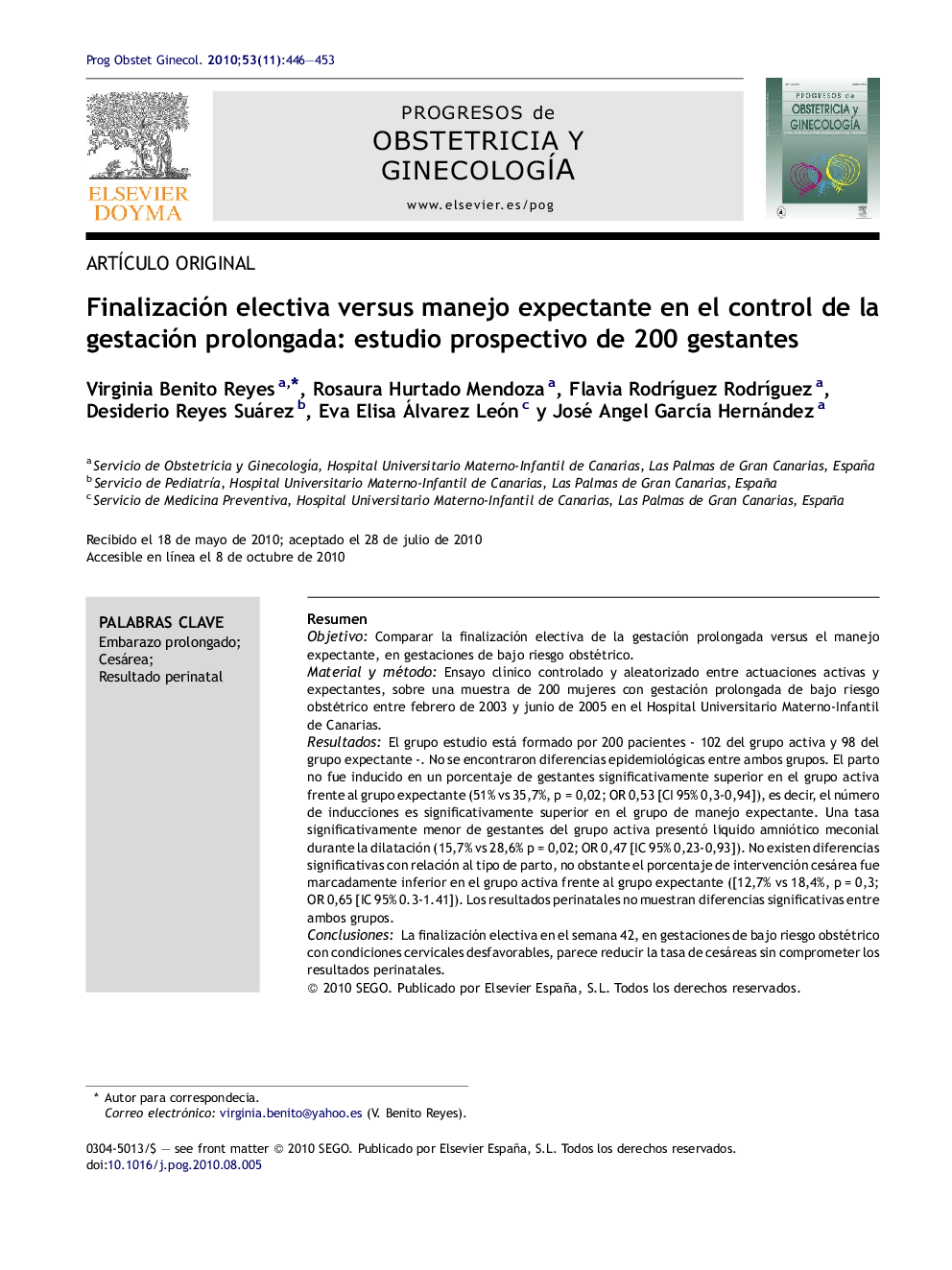| Article ID | Journal | Published Year | Pages | File Type |
|---|---|---|---|---|
| 3968940 | Progresos de Obstetricia y Ginecología | 2010 | 8 Pages |
ResumenObjetivoComparar la finalización electiva de la gestación prolongada versus el manejo expectante, en gestaciones de bajo riesgo obstétrico.Material y métodoEnsayo clínico controlado y aleatorizado entre actuaciones activas y expectantes, sobre una muestra de 200 mujeres con gestación prolongada de bajo riesgo obstétrico entre febrero de 2003 y junio de 2005 en el Hospital Universitario Materno-Infantil de Canarias.ResultadosEl grupo estudio está formado por 200 pacientes - 102 del grupo activa y 98 del grupo expectante -. No se encontraron diferencias epidemiológicas entre ambos grupos. El parto no fue inducido en un porcentaje de gestantes significativamente superior en el grupo activa frente al grupo expectante (51% vs 35,7%, p = 0,02; OR 0,53 [CI 95% 0,3-0,94]), es decir, el número de inducciones es significativamente superior en el grupo de manejo expectante. Una tasa significativamente menor de gestantes del grupo activa presentó líquido amniótico meconial durante la dilatación (15,7% vs 28,6% p = 0,02; OR 0,47 [IC 95% 0,23-0,93]). No existen diferencias significativas con relación al tipo de parto, no obstante el porcentaje de intervención cesárea fue marcadamente inferior en el grupo activa frente al grupo expectante ([12,7% vs 18,4%, p = 0,3; OR 0,65 [IC 95% 0.3-1.41]). Los resultados perinatales no muestran diferencias significativas entre ambos grupos.ConclusionesLa finalización electiva en el semana 42, en gestaciones de bajo riesgo obstétrico con condiciones cervicales desfavorables, parece reducir la tasa de cesáreas sin comprometer los resultados perinatales.
ObjectiveTo compare elective termination versus expectant management in low-risk prolonged pregnancy.Material and methodWe performed a controlled randomized clinical trial comparing the results of active and expectant approaches in the management of low-risk prolonged pregnancy in a sample of 200 women between February 2003 and June 2005 at the Maternity Ward of the Canary Islands University Hospital.ResultsThe study group consisted of 200 patients. There were 102 in the active management group and 98 in the expectant management group. No between-group epidemiologic differences were found. Labor was not induced in a significantly higher proportion of patients in the active than in the expectant group [51% vs 35.7%, p = 0.02; OR 0.53 (95% CI 0.3-0.94)] i.e. the induction rate was significantly higher in the expectant group. The proportion of patients with meconium-stained amniotic fluid during labor was significantly lower in the active management group [15.7% vs 28.6% p = 0.02; OR 0.47 (95% CI 0.23-0.93)]. No significant differences were found in the type of delivery, although the proportion of cesarean sections was noticeably lower in the active management than in the expectant management group [(12.7% vs 18.4%, p = 0.3; OR 0.65 (95% CI 0.3-1.41)]. No significant differences were found in perinatal outcomes between the two groups.ConclusionsElective termination of low-risk pregnancies with unfavorable cervical findings at week 42 seems to reduce the rate of cesarean section without impairing perinatal outcome.
